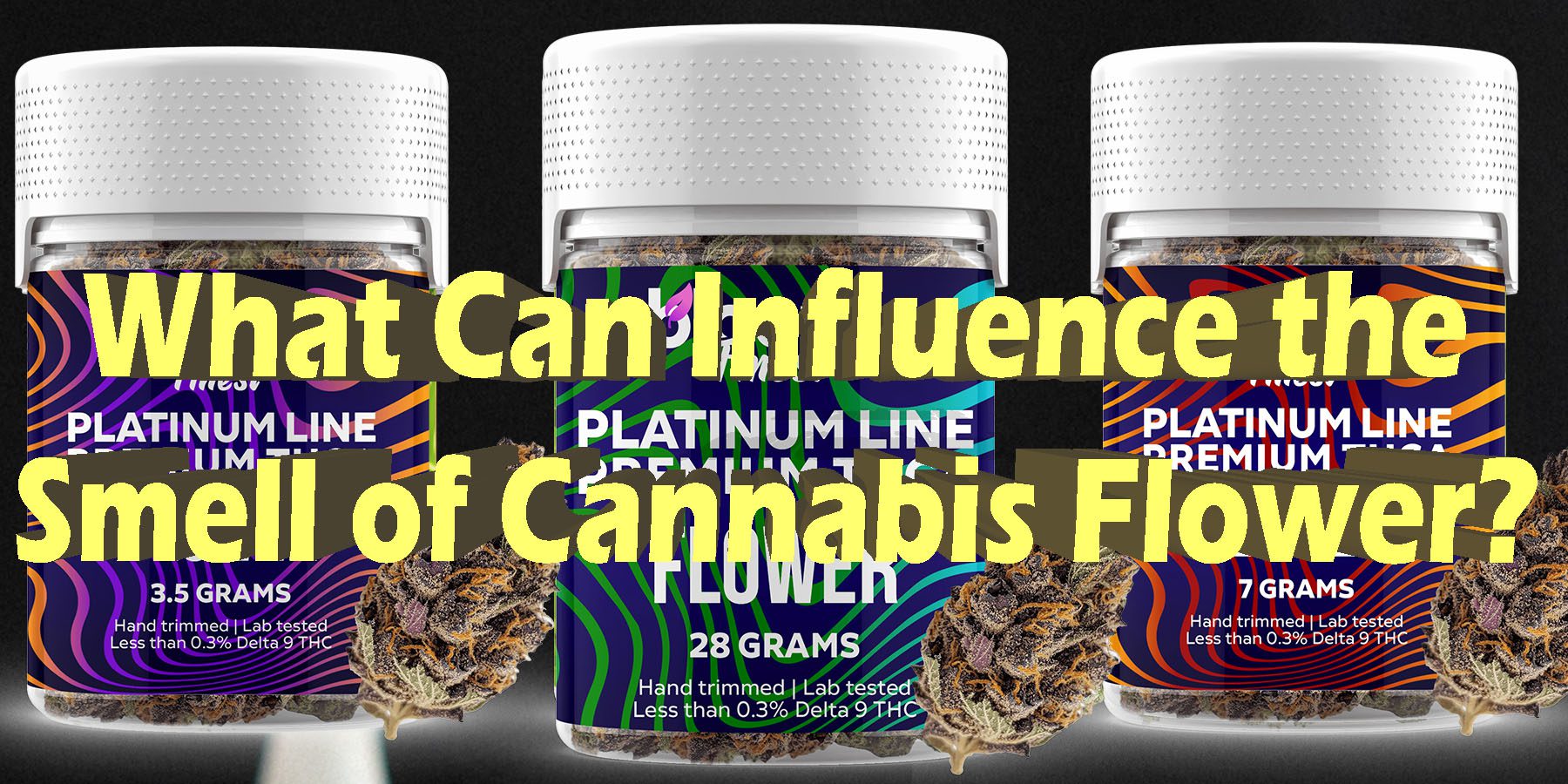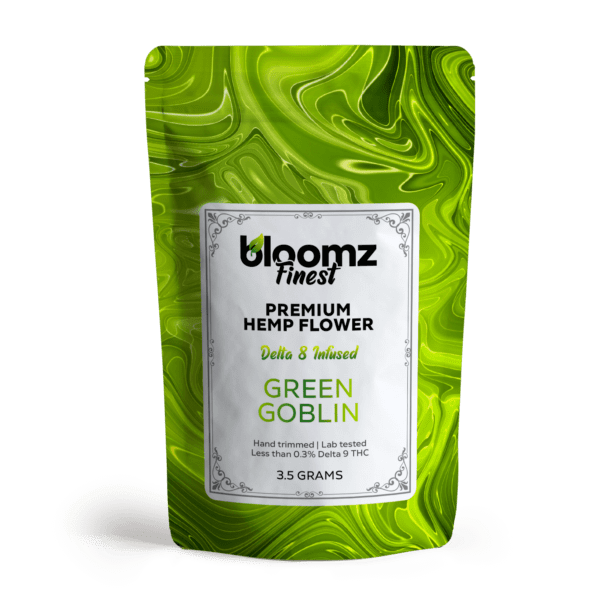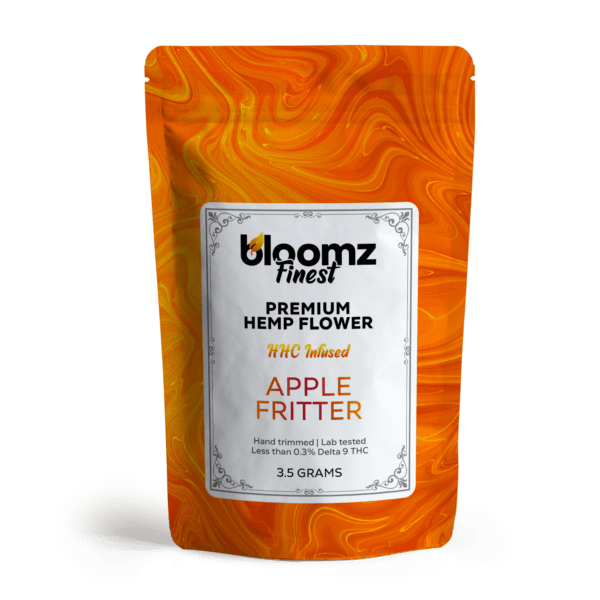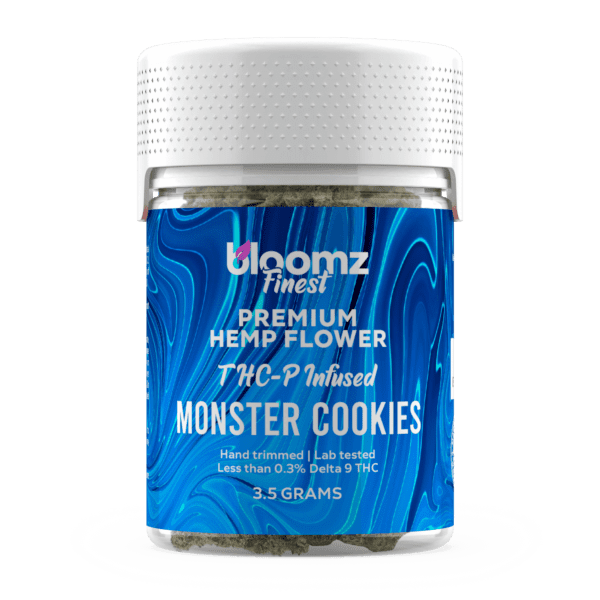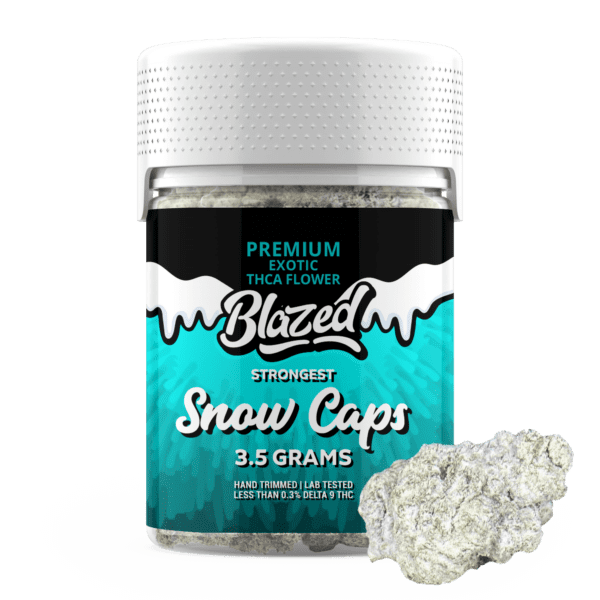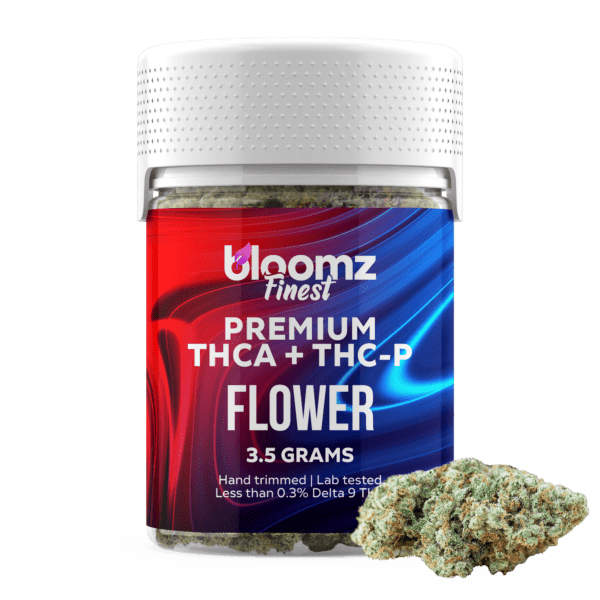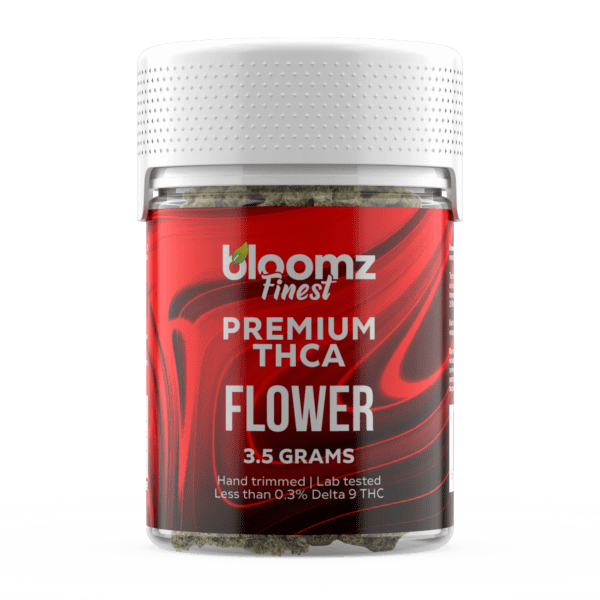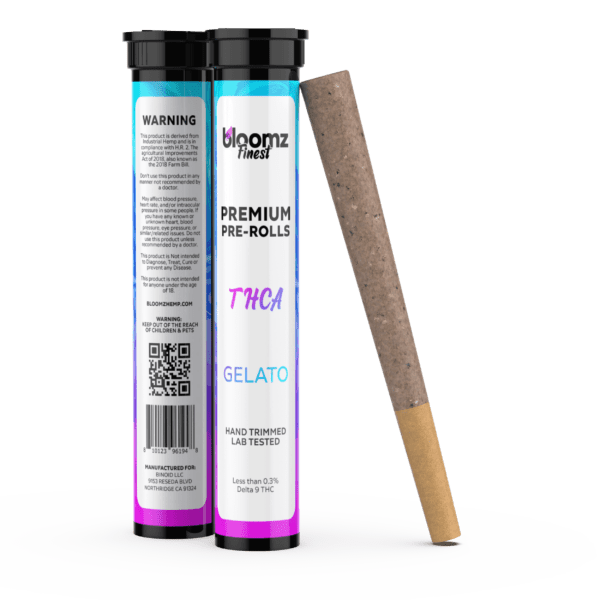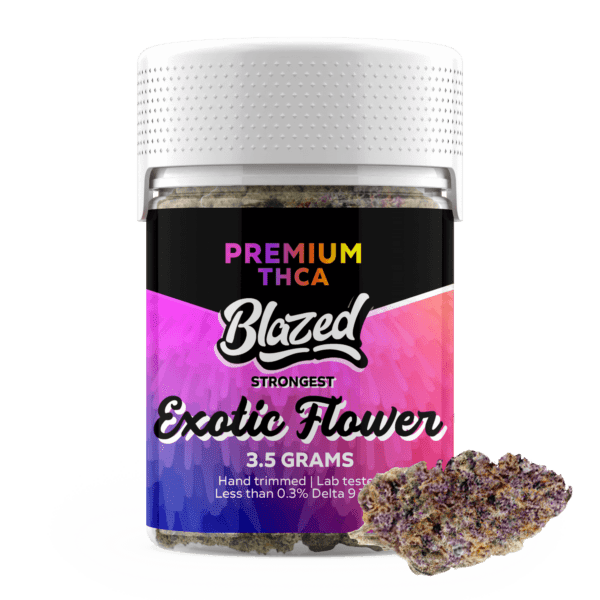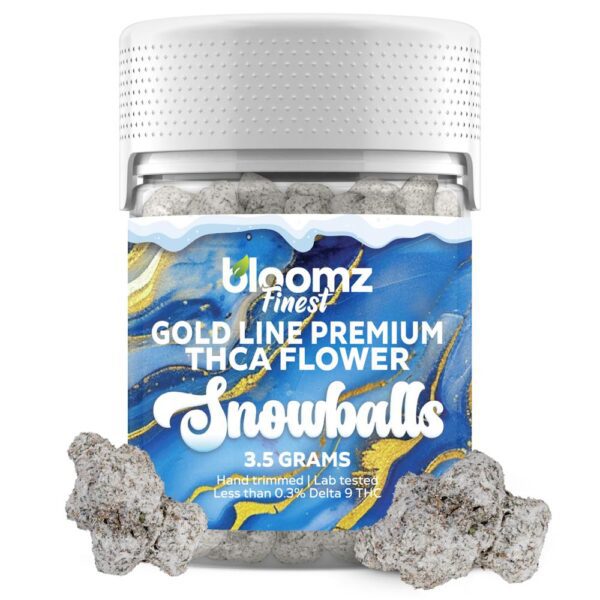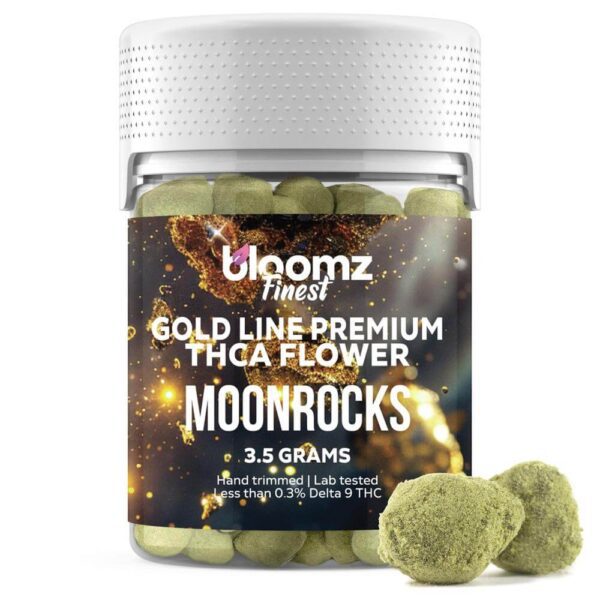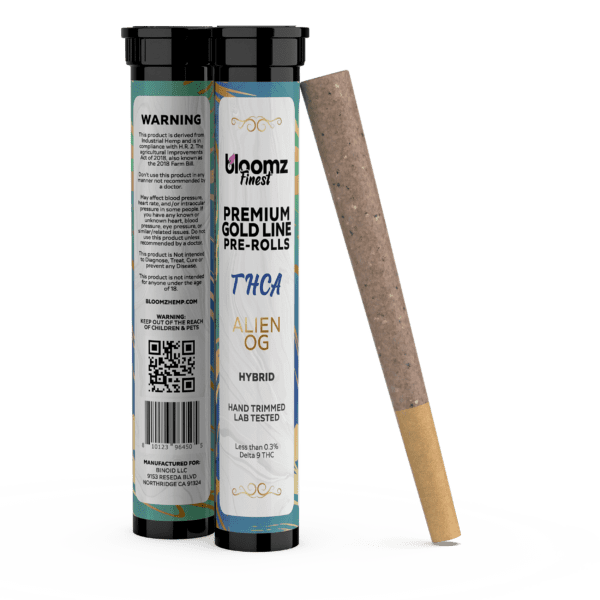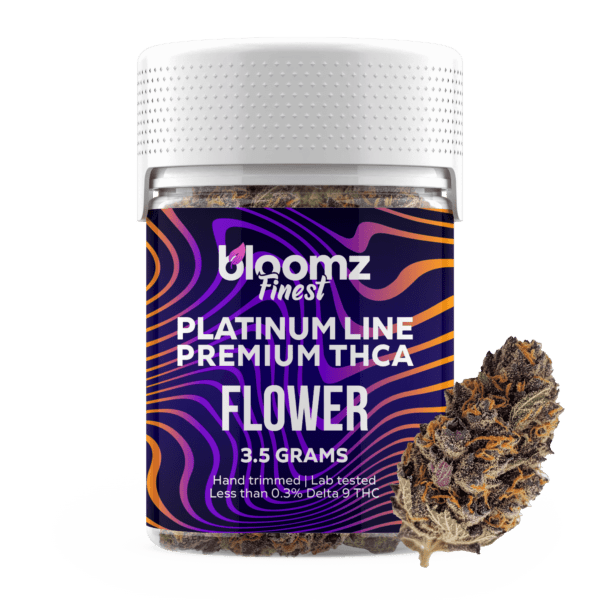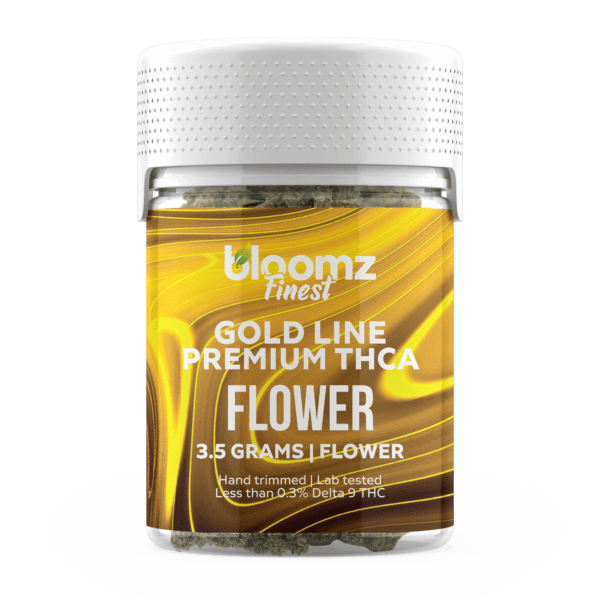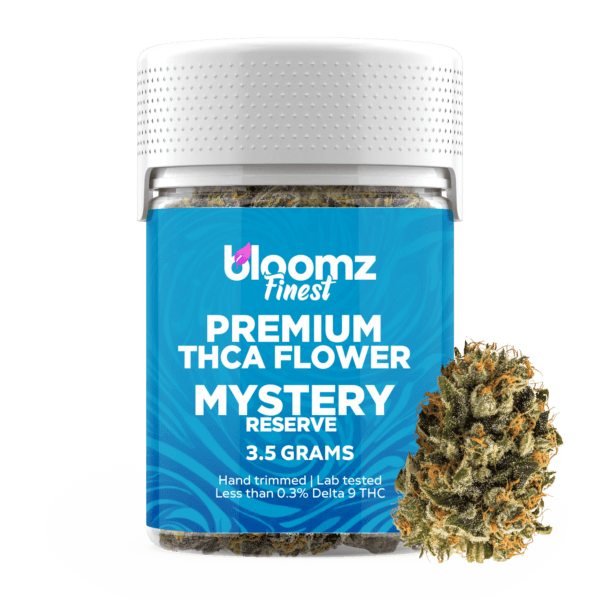To stand at the edge of a pine forest after a fresh rain is to be enveloped by a scent that is clean, sharp, and deeply invigorating. It is an aroma that feels both ancient and alive, a complex perfume woven from damp earth, woody bark, and the crisp, resinous needles of the trees themselves. This experience is a powerful reminder that nature communicates through fragrance. In the world of botanicals, this aromatic language reaches a remarkable level of complexity in the cannabis plant.
Its fragrance is a bold declaration of its presence—an intricate tapestry of scents that can range from the zest of a freshly peeled orange to the rich musk of dark soil, from the sweetness of lavender to the pungent spice of black pepper. This aromatic signature is the flower’s soul; a vibrant story told without words. So then, to truly understand cannabis, one must first learn to listen with the nose, as its scent is the most authentic guide to its character, quality, and the journey it offers.
To Buy Cannabis Flower Click Here
Recommended products
The Aromatic Blueprint Starts with Understanding What Cannabis Flower is Essentially
To identify where the multifaceted smell of cannabis originates, one must first appreciate the structure of the flower itself. The cannabis flower, colloquially known as a “bud”, is the reproductive organ of the female plant. While a marvel of natural design, its primary significance for consumers is its role as a highly specialized factory for the creation of the plant’s most sought-after chemical compounds.
The engine of this factory is the trichome. To the naked eye, trichomes present as a sticky, crystalline, and almost sugary coating that blankets the surface of the buds and their adjacent leaves. This frosty layer, however, is not a simple coating. Under magnification, trichomes are revealed to be intricate, mushroom-shaped glands. These tiny biological structures are the command centers for the synthesis of cannabinoids and, crucially for our topic, terpenes. Throughout the plant’s life, and especially during its flowering stage, these trichome heads work tirelessly, producing a potent resin that holds the key to the flower’s effects, its unique flavor profile, and its powerful, unmistakable aroma.
The density and health of these trichomes are a primary indicator of a flower’s quality. A bud that is lavishly adorned with a thick, shimmering layer of these glands is often lauded as “frosty”, “resinous”, or “crystalline”. This visual cue signals a high probability of a rich, well-developed aromatic profile and a potent overall experience. Conversely, a flower that appears dull, with sparse or damaged trichomes, will almost certainly possess a muted, uninspired aroma and offer a less satisfying experience. Therefore, when we speak of the captivating smell of cannabis, we are not referring to the plant matter of the leaves or stems, but to the cocktail of volatile aromatic compounds born and cradled within these minuscule, yet immensely important, resin glands.
Speaking of Terpenes, These are the Soul of Cannabis Aroma
The characteristic smell of cannabis is not due to a single chemical but to a complex class of organic compounds known as terpenes. These are volatile aromatic oils found throughout the natural world. They are responsible for the invigorating scent of a pine forest, the sharp, clean aroma of a lemon peel, the calming fragrance of lavender, and the spicy notes in black pepper. In the cannabis plant, terpenes are produced in the same trichome glands that synthesize cannabinoids like THC. More than 150 different terpenes have been identified in the cannabis plant, and each strain possesses a unique and genetically determined terpene profile.
From an evolutionary perspective, plants produce terpenes for survival. These powerful aromatic compounds can attract beneficial insects for pollination while simultaneously repelling predatory pests and inhibiting the growth of harmful fungi and bacteria. For the cannabis consumer, however, the purpose of terpenes is purely experiential.
The unique smell of a particular cannabis strain is the result of a “terpene symphony.” It is the specific combination and concentration of dozens of different terpenes working in concert that creates a signature aroma that is unlike any other. One strain might be dominated by a single, powerful terpene, while another might present a more balanced and complex bouquet of several. Learning to identify the most common terpenes is the first and most rewarding step toward understanding the rich and unspoken language of cannabis aroma.
Meet the Primary Terpenes That’re the Orchestra of Scent
While a vast number of terpenes exist, a select group tends to appear most frequently and in the highest concentrations, forming the aromatic foundation of most cannabis strains available today. Each deserves its own detailed exploration to be fully appreciated.
Myrcene: The Earthy Foundation
Often the most abundant terpene found in modern commercial cannabis, Myrcene serves as the bedrock for many classic cannabis aromas. Its scent profile is deeply complex, a rich tapestry that can be described as musky, earthy, and profoundly herbal. It carries distinct fruity undertones reminiscent of ripe mangoes, along with spicy notes of cardamom and cloves. Beyond cannabis, Myrcene is a key component in the essential oils of wild thyme, hops, and lemongrass, giving them their characteristic fragrance.
In the context of cannabis, a high concentration of Myrcene is largely responsible for the pungent, recognizably “skunky” smell that has become synonymous with potent cannabis flower. It functions as a foundational bass note in a strain’s aromatic bouquet, grounding brighter, fruitier top notes with its loamy, full-bodied base. Its presence is so foundational that some theories suggest its concentration level can influence how other compounds interact with the body, potentially contributing to the deeply relaxing and chilled-out effects many users associate with Myrcene-dominant strains. It doesn’t just provide a smell; it sets a mood.
Limonene: The Zesty Soloist
Among the vibrant orchestra of aromatic compounds found within cannabis, Limonene stands out as the bright, effervescent lead vocalist. Its name alone evokes its essence: the sharp, sweet, and unmistakably zesty fragrance of citrus. This monoterpene is the very soul of lemons, oranges, limes, and grapefruits, the compound responsible for the clean, uplifting scent that erupts when their peels are twisted. But its presence extends far beyond the citrus grove; it is also found in the rinds of juniper berries, the leaves of peppermint, and the needles of rosemary, lending a sharp, clean top note to a wide array of botanicals.
More than just a pleasant scent; it is a powerful signifier, a key to unlocking a specific category of sensory experience that is cherished by countless enthusiasts. Its presence is a promise of brightness, a burst of aromatic sunshine that can define a strain’s entire character. When a cannabis flower is rich in Limonene, it announces itself with authority. The aroma is often the first thing a consumer notices, cutting through any underlying earthiness or musk with its piercing citrus clarity.
It doesn’t just smell like lemon; it smells like a specific part of the lemon—the zest, where the oils are most concentrated and the fragrance is most potent. This clean, zesty profile is the defining characteristic of many strains that are anecdotally categorized as “Sativas” or “daytime” options. The scent itself seems to possess an energetic quality, a world away from the heavy, earthy notes of a Myrcene-dominant strain.
Caryophyllene: The Spicy Anomaly
Beta-caryophyllene holds a unique and fascinating position in the world of cannabis compounds. It is the only known terpene that also behaves like a cannabinoid, possessing the ability to directly interact with the body’s endocannabinoid system (specifically the CB2 receptors). This remarkable dual nature is reflected in its complex and robust aroma. Caryophyllene possesses a distinctly spicy, peppery, and pungent fragrance, layered with rich, woody undertones.
It is the dominant aromatic compound in black pepper, cloves, cinnamon, and oregano, and its presence in a cannabis strain adds a warm, invigorating kick to the bouquet. When you get a tingle in your nose from a particularly pungent strain, you are likely sensing Caryophyllene at work. It provides a sophisticated and full-bodied character that can balance sweeter or fruitier notes, preventing a profile from becoming overly saccharine.
Its spicy, warm character is often associated with a comforting and gentle sense of physical relaxation, making it a key component in strains chosen for unwinding without heavy sedation. Its unique biological activity and its powerful, room-filling aroma make Caryophyllene one of the most intriguing and important terpenes in the cannabis spectrum.
Linalool: The Floral Soother
Best known for giving the lavender plant its signature calming and serene scent, Linalool contributes a soft, sweet, and delicately complex floral aroma to the cannabis profile. Its fragrance is not a simple, one-note floral, but often carries subtle hints of spice, candied fruit, and even a touch of woodland freshness. While it is less common to find Linalool as the single most dominant terpene in a strain, its presence, even in moderate amounts, can have a profound impact on the overall bouquet.
It acts as a masterful harmonizer, softening the sharper edges of more pungent terpenes like Pinene or Caryophyllene and lending a smooth, luxurious, and calming quality to the sensory experience. Strains with a noticeable Linalool content are often described as having a particularly “pleasant” or “perfumey” aroma that is less aggressive than skunky or gassy profiles. This soothing aromatic character is frequently sought after by consumers looking for a tranquil and peaceful state of mind, as the gentle scent itself seems to encourage a state of calm relaxation.
Pinene: The Forest’s Breath
As one of the most common terpenes in the entire plant kingdom, Pinene offers an aroma that’s both instantly recognizable and wonderfully refreshing. Existing in two forms (alpha-pinene and beta-pinene), it delivers exactly the fragrance one would expect: the sharp, clean, and invigorating scent of a coniferous forest. It’s the smell of freshly snapped pine needles, of rosemary crushed between the fingers, and of basil leaves ready for the kitchen. In a cannabis strain, Pinene provides a crisp, resinous, and clarifying fragrance that acts as a brilliant top note.
It has the ability to cut through the potential haziness of heavier, earthier aromas, providing a bright, alert, and focused character to the bouquet. The experience of smelling a Pinene-dominant strain can feel like taking a deep, cleansing breath of fresh mountain air. This clean and familiar scent can make it one of the easiest terpenes for a novice to identify, providing a clear and accessible entry point into the world of aromatic analysis. Its association with alertness makes it a key component in strains favored for focus and creative endeavors.
Beyond Terpenes are the Subtle Role of Esters and Flavonoids
While terpenes are the undisputed stars of the aromatic show, they are not the only players on the stage. To fully appreciate the nuance of a flower’s scent, one must acknowledge other classes of compounds that contribute to the final bouquet.
Flavonoids, for instance, are a diverse group of phytonutrients that are primarily known for providing pigmentation to plants. They are the reason blueberries are blue and, in the case of cannabis, why some strains exhibit stunning deep purple or reddish hues. While many flavonoids are odorless, some, like cannaflavins A and B (which are unique to cannabis), are believed to work within the entourage effect and may subtly influence the overall sensory profile.
More impactful on a purely aromatic level, though less discussed than terpenes, are esters. In the broader botanical world, esters are chemical compounds renowned for creating the sweet, fruity smells we associate with ripe produce. The characteristic scent of a banana, the tang of a pineapple, or the sweetness of a raspberry are all thanks to specific esters.
While cannabis research is still delving into their precise role, it is widely believed that these compounds contribute significantly to the underlying sweet and fruity notes that can make some strains so appealing. They can round out a terpene profile, adding a layer of jam-like sweetness or creamy fruitiness that terpenes alone cannot fully account for, adding another layer of aromatic complexity for the discerning nose to uncover.
So, What Does the Smell Says About the Cannabis Flower?
A cannabis flower‘s scent is its resume. It is a rich source of information that communicates its quality, its history, and its potential with startling accuracy. A consumer who learns to trust their nose can make far more informed choices than one who relies on sight alone.
The single most important quality that a strong aroma indicates is freshness and overall quality. A powerful, pungent, and complex fragrance—often described as “dank”, “loud” or “gassy”—is a clear and unambiguous sign of a superior product. This powerful fragrance indicates a high concentration of preserved terpenes, which in turn suggests a chain of quality: the plant was grown from strong genetics, it was cultivated with care to maximize its aromatic potential, it was harvested at the peak of its maturity, and then expertly dried and cured to lock in its volatile compounds.
Conversely, the smell—or lack thereof—is the most reliable indicator of degradation or poor quality. A faint, muted aroma is an immediate red flag, suggesting that the cannabis flower is either old, was stored improperly, or was subjected to a rushed and careless cure. An even more troubling sign is the smell of dried hay or grass. This is the scent of chlorophyll, the compound that gives plants their green color. In a proper, slow cure, chlorophyll breaks down and dissipates.
Its presence in the final product means the cure was rushed, and the resulting experience will be harsh and unpleasant, with the delicate terpene flavors completely obscured. The most severe warning sign is any hint of a musty, mildewy, or ammonia-like smell. This is the unmistakable signature of mold or bacterial growth, which renders the flower unsafe for consumption and means it must be discarded.
In Terms of Influencers, What Changes and Shapes the Smell?
The aromatic profile of cannabis is a delicate and dynamic quality. It is forged by genetics and cultivation, refined by the curing process, degraded by time and environment, and ultimately transformed by the method of consumption.
The Foundation: Genetics, Cultivation, and Curing
The journey of aroma begins with genetics. A plant’s DNA is the fundamental blueprint that dictates its potential to produce certain terpenes in specific ratios. A strain that is genetically predisposed to be rich in limonene will always have a citrusy character. However, this genetic potential must be unlocked through skillful cultivation. The growing environment plays a massive role. An indoor grower can manipulate light spectrums and nutrient feeds to encourage maximum terpene expression, while an outdoor grower relies on the natural terroir—the unique combination of soil, sun, and climate—to shape the final aromatic profile. The very microbiology of the soil can influence which nutrients are available to the plant, subtly altering the final terpene ratios.
Perhaps the most critical stage for aroma preservation is the drying and curing process. After harvest, the cannabis flower needs to be slowly dried and then sealed in airtight containers for a period of weeks or months. This curing process allows excess moisture and undesirable compounds like chlorophyll to break down, while preserving and even enhancing the delicate terpenes. A rushed, improper cure will cause the terpenes to evaporate along with the water, resulting in a permanent loss of aroma and a harsh, grassy final product. An expert cure is the final artisanal touch that transforms a good flower into a great one.
The Guardian’s Role: Storage, Age, and Quantity
Once the cannabis flower is perfectly cured, its aromatic profile is at its peak. From this point on, the goal is preservation. The same “Four Enemies” that degrade cannabinoids—Light, Air, Temperature, and Humidity—are even more destructive to the fragile terpenes.
Light and Air: UV light will rapidly break down terpene molecules, while exposure to oxygen (oxidation) will cause them to degrade and lose their potency. Storing cannabis flower in a clear container or a poorly sealed bag will quickly mute its vibrant aroma.
Temperature and Humidity: Heat is the primary enemy of terpenes, causing these volatile oils to simply evaporate into the air. Storing your cannabis flower in a warm place is the fastest way to silence its scent. Improper humidity will also ruin the aroma; too dry, and the terpenes evaporate; too humid, and you risk the musty, unpleasant smell of mold.
As cannabis flower ages, a natural loss of terpenes is inevitable, but proper storage can slow this process dramatically, preserving the aromatic integrity for many months. The quantity of flower also plays a simple but direct role. A larger amount of flower stored together will have a much more powerful and ambient aroma than a small amount, simply due to the higher volume of terpenes being released into the container’s headspace.
Recommended products
-
Blazed Exotic THCA Flower
$36.99$79.99 -
THCA Moonrocks – Gold Line
$57.99$89.99 -
Exotic THCA Pre-Rolls Gold Line – 3-Pack/6 Pack
$36.99$69.99
The Moment of Truth: How Usage Method Transforms the Scent
The way you choose to consume your cannabis dramatically alters how its aroma is expressed and perceived.
Smoking (Combustion): When you light cannabis flower in a joint, pipe, or bong, the intense heat of combustion instantly vaporizes the terpenes, releasing their fragrance. However, this process also burns the plant material itself, creating a host of new aromatic compounds. The resulting smell is therefore a potent combination of the flower’s original terpene profile and the distinct, heavy aroma of smoke, which contains tar and other carbon-based byproducts. The aroma from a joint is often more “perfumey” as the paper burns alongside the flower, while the smell from a bong can be slightly “cleaner” due to the water filtration, though it is still fundamentally a smell of smoke that lingers heavily in the air.
Vaping (Vaporization): Vaping offers a much more nuanced and pure aromatic experience. By heating the flower to a controlled temperature below the point of combustion, a vaporizer allows the terpenes and cannabinoids to gently boil into an inhalable vapor. This process avoids the creation of smoke and tar, resulting in a smell that is a much truer representation of the fresh flower’s native profile. Because different terpenes vaporize at different temperatures, users can even “flavor chase” by starting at a low temperature to taste the bright, volatile terpenes, and then increasing it to release the heavier, earthier ones. The resulting vapor has a much lighter scent that dissipates significantly faster than smoke.
Cooking/Baking (Decarboxylation & Infusion): Using cannabis in culinary applications introduces an entirely new set of aromas. The initial step of decarboxylation—heating the flower to activate THC—fills a kitchen with a very specific “toasted,” “roasted,” and “nutty” smell that is quite distinct from the fresh flower. When this activated flower is infused into butter or oil, the fat takes on a strong, herbaceous, and slightly pungent aroma. However, when this infusion is finally baked into something like cookies, the cannabis smell is often relegated to a subtle background note, largely masked by the more dominant aromas of sugar, chocolate, vanilla, and other culinary ingredients.
A Practical Guide on How to Train Your Nose
Developing your sense of smell when it comes to cannabis flower offers several advantages. For instance, it allows you to better understand the plant’s diverse characteristics, thus impacting your overall experience. This heightened awareness can also help in recognizing quality and potential issues, contributing to more informed choices. Ultimately, refining your olfactory skills deepens your appreciation for the complexities of this botanical. Remember, like any sensory skill, it simply takes practice, so here’s what you can do:
Establish an Aromatic Baseline with a Scent Library: You cannot effectively identify a scent in cannabis if you don’t have a clear mental reference for it. The first and most important step is to build a real-world “scent library”. Go beyond just reading descriptions and engage with the actual sources of these primary terpenes. Take the time to zest a fresh lemon and deeply inhale its sharp, clean oil (Limonene). Crush a fresh pine needle between your fingers to release its invigorating, resinous fragrance (Pinene). Crack open a whole black peppercorn to experience its spicy, warm kick (Caryophyllene). Slice into a ripe mango and note its unique fruity musk (Myrcene). Keep a small bag of dried lavender to recall its soothing floral notes (Linalool). By consciously smelling these physical items, you are creating strong, reliable scent memories that your brain can later access when you encounter them in the complex bouquet of a cannabis flower.
Master the “Sommelier Sniff” for Layered Perception: A professional wine taster would never just stick their nose in a glass and inhale deeply once. They use a multi-step process to perceive the layers of aroma, and you can do the same with cannabis. This technique acknowledges that different terpenes have different weights and volatilities. Lighter, more volatile terpenes (the “top notes”) will hit your nose first, while heavier, less volatile ones (the “base notes”) will linger. First, open your jar or bag and hold it about a foot away from your face, gently wafting the air towards you. This allows you to catch the most delicate top notes—the bright citrus or sharp pine—without being overwhelmed. After this initial impression, bring the container closer and take a slow, deliberate inhale to capture the full spectrum, allowing the heavier, earthy, musky, and spicy base notes to register.
Gently Rouse the Aromas to Unleash Their Potential: The most potent aroma is often locked just beneath the surface of the bud, protected by the outer layer of trichomes. To get a truer sense of the flower’s aromatic potential, you need to gently rouse it. The best way to do this is to take a single, well-formed bud and roll it very gently between your thumb and forefinger. Do not crush it or grind it. This gentle friction and the warmth from your hand are just enough to rupture some of the outermost trichome heads, releasing a fresh and powerful wave of volatile terpenes. This technique gives you a burst of the cannabis flower‘s truest, most vibrant scent profile. Be mindful that this will make your fingers sticky and transfer some resin, so it’s best done with a bud you are about to prepare for use.
Curate a “Scent Flight” for Comparative Analysis: The best way to sharpen your senses is not by smelling one strain in isolation, but by comparing and contrasting. The next time you visit a dispensary or place an online order, consider purchasing smaller amounts of two or three starkly different strains. For example, choose one that is described as citrusy (like a Lemon Haze), one that is earthy or gassy (like an OG Kush), and one that is distinctly fruity or sweet (like a Gelato). Then, set up a “scent flight,” similar to a beer or wine tasting. Smell each one in succession, take notes on your impressions, and then go back through them again. The stark differences will make the unique characteristics of each profile stand out in high relief, training your brain to notice nuance much more effectively.
Perform a “Dry Pull” to Isolate Flavor: This classic technique is borrowed from the world of premium cigars and pipes, and it is an exceptional way to taste the terpenes directly. Before you apply any flame or heat, simply take a draw from the unlit product. If you’ve rolled a joint, take a gentle puff from the end before you light it. If you’ve packed a bowl, put it to your lips and inhale. This “dry pull” draws air across the ground flower, carrying the pure, unadulterated terpene flavors directly onto your palate. You will be amazed at how clearly you can taste the lemon, pine, or berry notes without the interference of smoke. This is the purest expression of the cannabis flower‘s flavor profile and a critical step for any aspiring connoisseur.
Pay Attention to the “Bloom” of the Grind: The aroma of a whole bud can be significantly different from the aroma of that same bud once it has been ground. The whole bud presents a more “cured” and blended aroma from its surface. Grinding, however, vastly increases the surface area and breaks open millions of internal trichomes all at once, releasing a powerful “bloom” of freshly liberated terpenes. Always take a moment to smell the cannabis flower immediately after you’ve ground it. This is often when the scent is at its most intense and complex. You might notice subtle notes in the ground flower that were not apparent in the whole bud, giving you another layer of aromatic data to analyze.
Reset Your Olfactory Senses to Avoid Fatigue: If you smell several different strains in a row, you will inevitably experience “olfactory fatigue,” a temporary dulling of your sense of smell where all the aromas begin to blend together. To ensure you are assessing each strain accurately, you need to periodically reset your nose. The classic sommelier trick is to sniff whole coffee beans, as their strong, simple aroma effectively clears the sensory slate. If you don’t have coffee beans handy, another highly effective method is to simply smell a neutral part of your own clean skin, like the crook of your elbow. The familiar scent of “you” acts as a personal baseline, resetting your olfactory receptors. Alternatively, just stepping outside for a minute of fresh air can work wonders. Cleansing your palate between strains is essential for an accurate and enjoyable assessment.
The Unspoken Language of Scent
The aroma of cannabis is so much more than just a simple smell; it is a complex and unspoken language. It tells the story of a flower’s genetic past, its journey through cultivation, and the care with which it was handled. For the consumer, learning to interpret this language is a transformative skill. It elevates the experience from a passive purchase to an active, engaged, and deeply personal exploration.
Trusting your nose allows you to identify quality, anticipate the character of an experience, and appreciate the incredible diversity this single plant has to offer. The scent is the first handshake, the initial introduction to the character of the flower, and the truest key to unlocking its secrets.
To Buy Cannabis Flower Click Here
Recommended products
-
Exotic THCA Smalls
$179.99$329.99 -
THCA Flower – Platinum Line
$49.99$79.99 -
THCA Flower – Indoor Exotics – Gold Line
$37.99$69.99 -
THCA Flower – Mystery Reserve
$41.99$79.99

